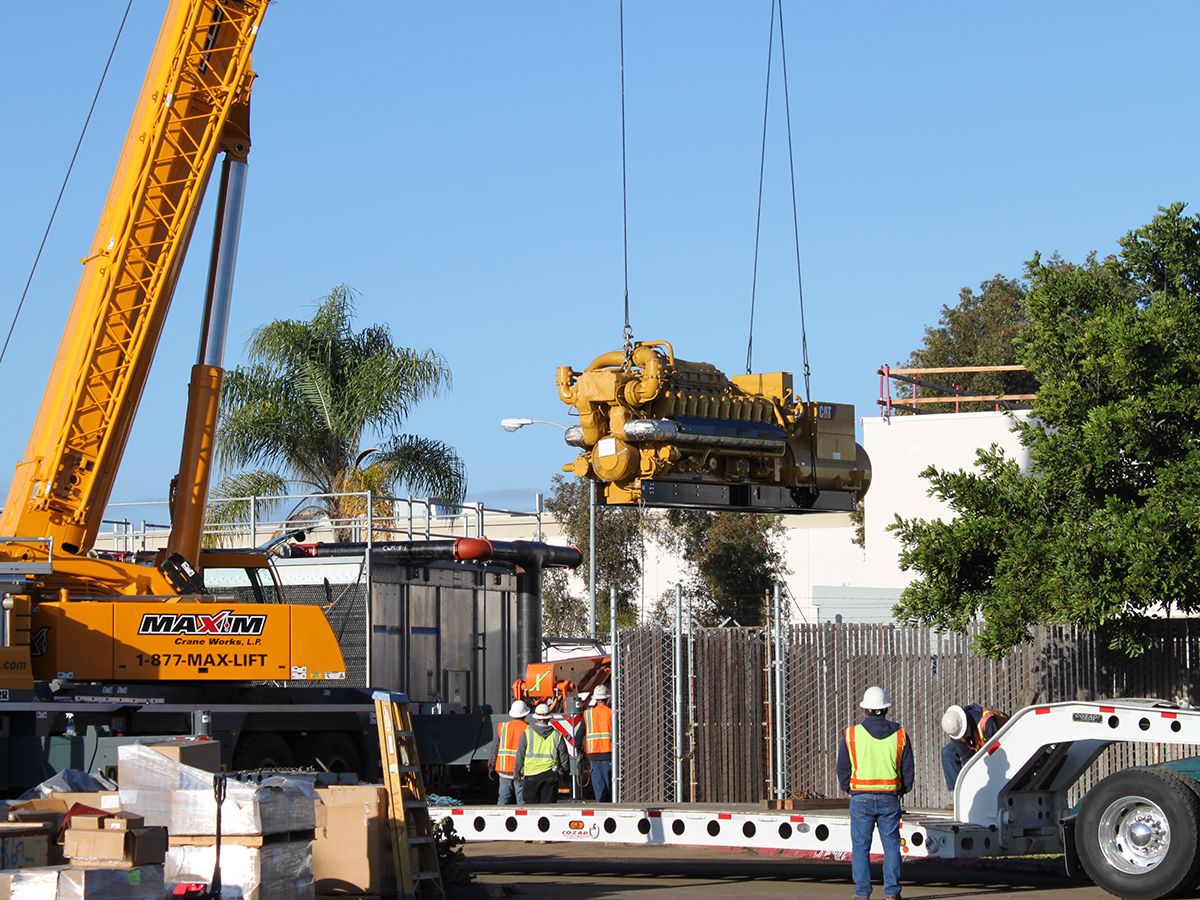Power Need
When a widespread outage knocked out power to the southwestern U.S. in September 2011, it paralyzed San Diego, plunging the nation's eighth largest city into darkness. As authorities worked to control the ensuing chaos, Kyocera America's manufacturing plant was out of commission for eight hours.
The two large electric furnaces that are integral to the manufacture of ceramic packages for integrated circuits were not damaged, but the outage underscored Kyocera's need for standby capacity in the event of a power failure. If the furnaces cool abruptly, all of the working processes shut down, with several hours of downtime translating into millions of dollars in losses, according to John Tanaka, manager of automation and plant engineering.
“With the unique nature of our ceramic manufacturing process, sometimes it can take those big furnaces three to four months to recover from the damage,” Tanaka said.
Fortunately, Kyocera's Cat® dealer, Hawthorne Power Systems, responded immediately when plant engineer Nathan Justice rushed to the dealership to ask for help after all phone lines stopped working. A rental generator set helped keep power flowing to the most critical part of the plant. “They hooked the generator up to one of their trucks and brought it right over,” Justice said. “If Hawthorne hadn't responded in a timely manner, we would have had major damage to the furnace.”
Even before the outage hit, plans were underway to replace the 23-year-old gas generators in a total overhaul of the facility's cogeneration plant — which involved gutting it down to the floor.
Because of the gas generator sets' age, there was a high cost for maintenance and operation. Furthermore, the old engines didn't have emission controls to comply with California air quality standards — although they were grandfathered in and met emissions standards during lean-burn testing.
“In the future, we expect California's emission standards to become tighter and tighter, so we want to be proactive,” Tanaka said of the decision to rebuild the cogeneration plant and install two new Cat gas-powered generators, along with a Cat diesel generator for standby power. “Realizing significant cost savings was also a key factor in our decision.”
Solution
The scope of the project involved removing four 800 kW gas generators along with two absorption chillers and one centrifugal chiller, said Justice, who is managing the project. The cogeneration building was gutted to a shell.
Where Kyocera formerly had four engines in a line, the new plant will employ a Cat G3520C and a Cat G3516C — both fueled by natural gas — to produce 3,690 kW for use at Kyocera's facility. A Cat 3512C diesel generator set will provide 1,500 kW of standby power.
Waste heat from the generator sets will be used to produce 970 tons of chilled water in new hot-water absorption chillers.
The original intent was to rebuild the existing 3.2 MW cogeneration plant with gas only. However, Tanaka and Justice were not confident that the frequency response of the new gas generator sets would allow for sustainable island mode capability and load sharing in a stand-alone environment without a diesel generator. The former cogeneration plant operated in parallel with the utility all the time. Each generator set used the utility as a phase reference to stay in sync. If the Kyocera plant lost the utility feed from San Diego Gas & Electric, then everything would go down.
“Originally, we just wanted to use gas engines to maintain our plant, but when we thought about having the ability to backup our plant in the event of a power loss, it was necessary to install a large enough diesel to maintain the optional standby loads, such as the large furnaces on our production lines,” Justice said. “The frequency response of the gas engines wasn't going to provide us with the ability to supply backup power and remain stable.”
“So, with the inability to run in stand-alone mode, combined with the fact that the gas engines had over 160,000 hours on them, it was decided to upgrade our plant,” Justice said.
Tanaka came to the conclusion that if Kyocera wanted to have stand-alone capability, it would be necessary to add diesel to support the gas engines and their load sharing and block-loading ability — while also having the ability to recover from a loss of utility power in a timely manner. The standby diesel generator set can start up the entire plant from a dead bus, without lights and without any power — hence the nickname “black start.”
After researching the project for more than three years, Tanaka received approval from Kyocera headquarters in Japan to replace everything in the cogeneration plant, including the concrete floor and the connecting infrastructure that lay beneath it.
Results
Kyocera uses the waste heat from its cogeneration facility to feed the chillers that air condition the plant. Beyond power consumption considerations, the plant requires low humidity and an optimum furnace temperature range for the manufacture of its ceramic packages and other sensitive products.
Originally, Tanaka investigated the possibility of using turbines for cogeneration; however, gas generators proved to be a better match for Kyocera's chilled water needs.
With 14 different load centers within the plant, Justice says the intent of having the black start diesel generator is to back up and protect the two large money-producing furnaces, as well as 15 smaller ones. The generator will also back up the facility's data center, lighting and security system.
“It is rare that we actually use emergency power, but with our production requirements, we simply must have reliable emergency backup,” Tanaka adds. “It's really going to function as one — two gas engines with a diesel.”
For Tanaka, Cat generator sets were the obvious choice. “Since we have used Cat engines for many years, when it came time to replace them, we decided to stay with what we know we can count on.”

